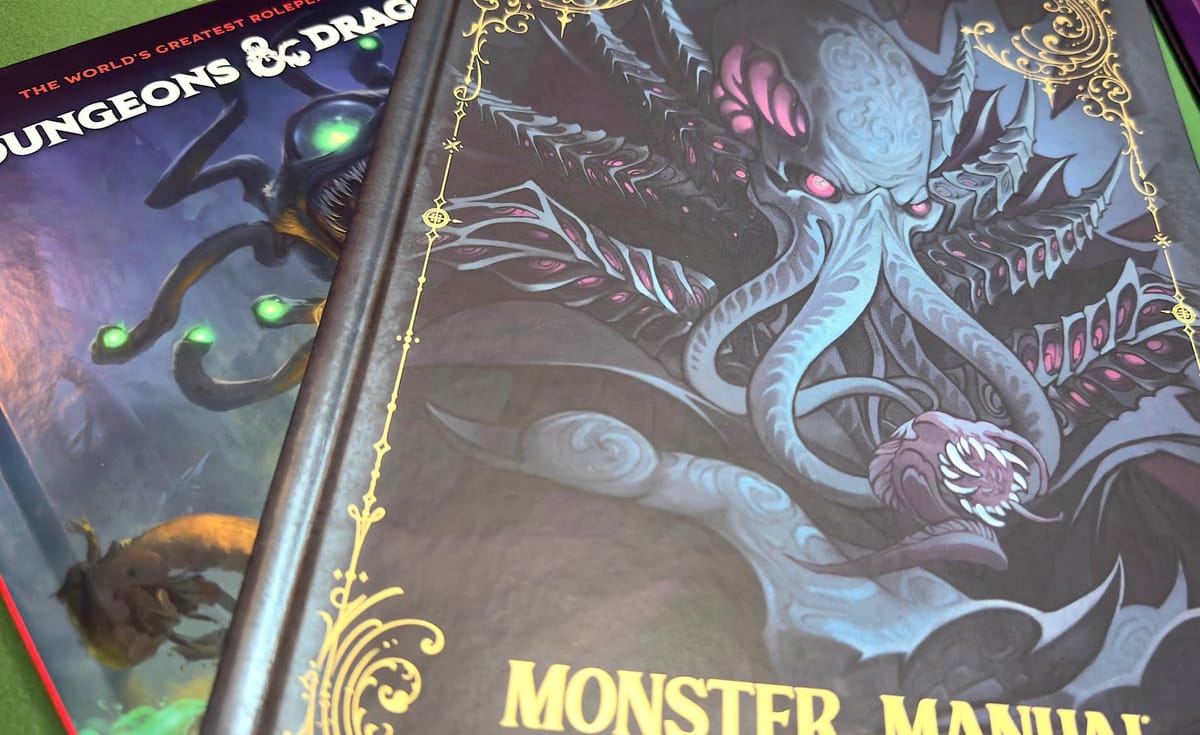
The monsters, NPCs, and villains of a Dungeons & Dragons campaign breathe life into the setting and give the players something to struggle against. A D&D game can succeed or fail on the bad guys alone, so having a stable of enemies to draw from is essential for any DM. The Monster Manual is the first and foremost resource for adversaries in D&D. It has long been regarded as the third essential book needed to play the game. Combined with the Player's Handbook and the Dungeon Master's Guide, you have the three core rulebooks. February 2025 sees the release of the Monster Manual 2024, the last of the 2024 updates to the 5th Edition Dungeons & Dragons core rulebooks.
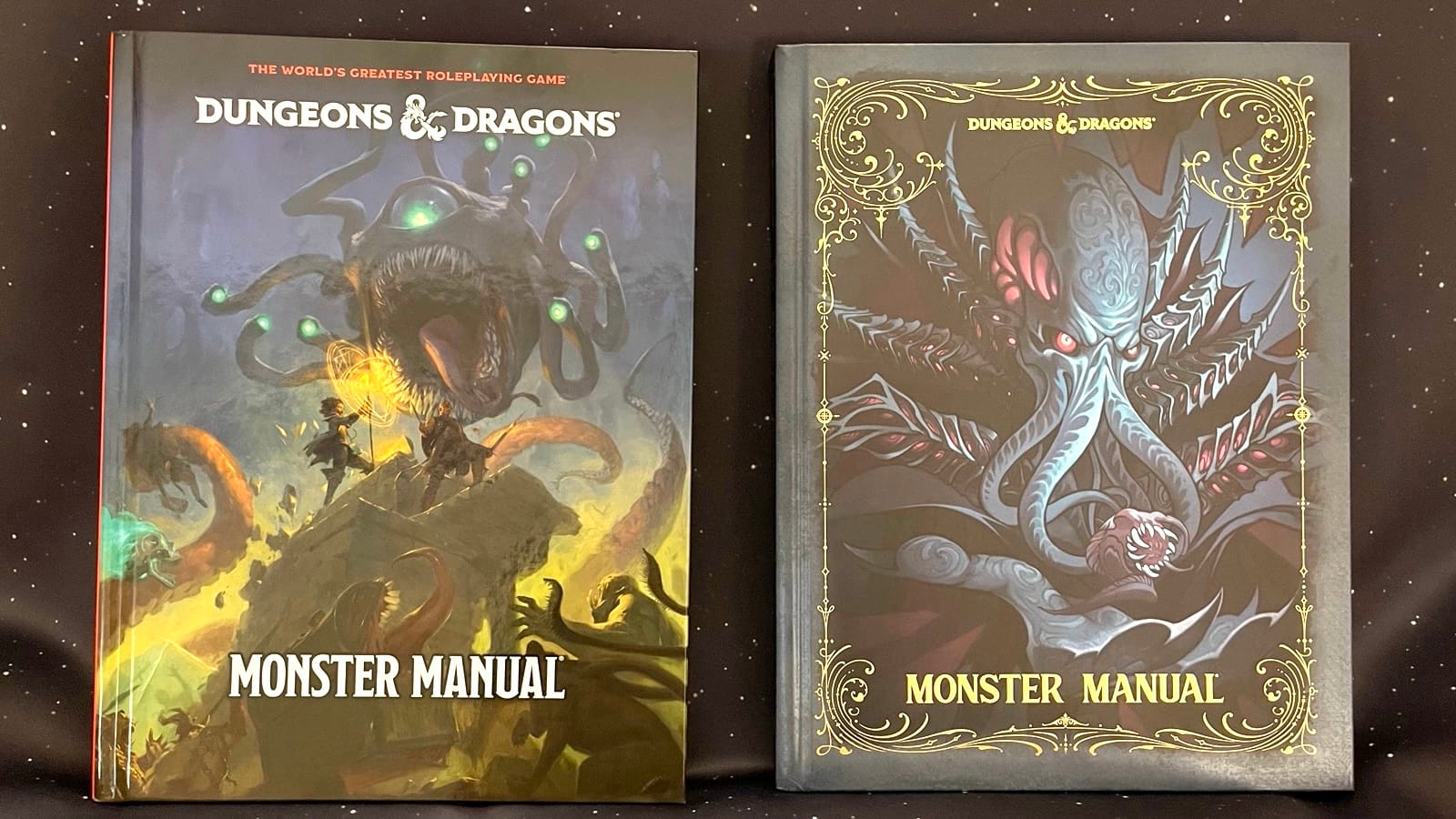
With this Monster Manual update, Wizards of the Coast follows their standard procedure for 5e D&D and offers two different covers. The standard cover, available everywhere, features a painting by Tyler Jacobson of a beholder and other classic D&D monsters menacing two adventurers (one being Minsc, recognizable to many veteran players). Like the other two 2025 updated books, the standard cover differs visibly from the 2014 edition with reversed colors on the spine, so it will stand out on the shelf. The alternate cover, available from local game stores, has a stylish monochromatic painting by Olena Richards of a mind flayer holding a mind flayer tadpole in the palm of its hand. Both paintings are expertly executed, beautiful, and inspiring.
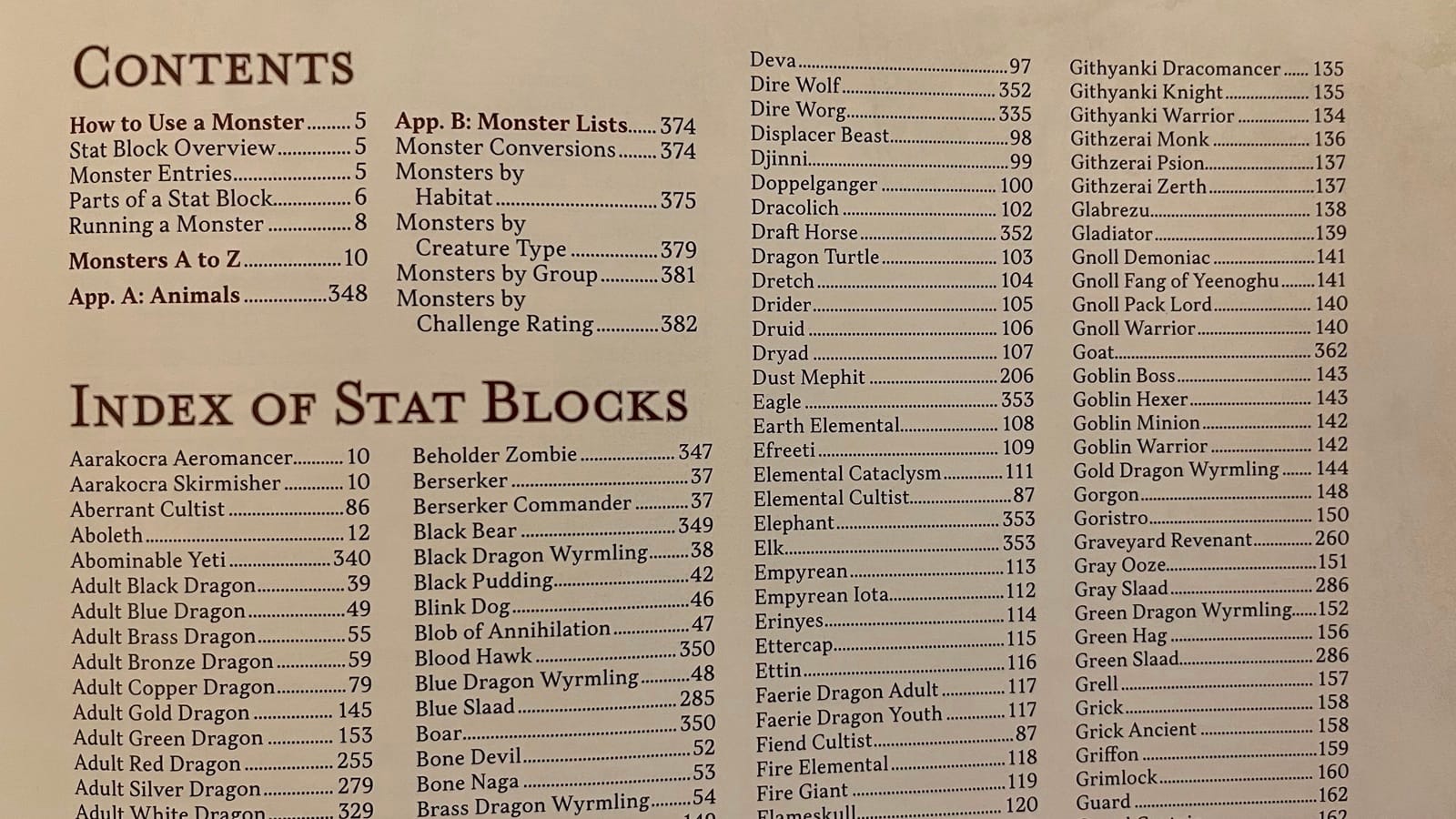
The 2024 Monster Manual starts with a brief table of contents followed by a two-page index of every monster in the book. The order the monsters are presented has been reorganized – they are presented in alphabetical order by monster name. While it may seem like this is how it was in the 2014 edition, it actually differs. In 2014 the monsters were presented in alphabetical order by monster name or by groupings that were sometimes, but not always, based on a game rule. For instance, in the 2014 edition dao, djinni, efreeti, and marid were grouped together under the genie entry which starts by identifying these four elementals as comprising the genie group. Similarly, the giants entry in 2014 contained the six "true" giants and left out other giant-type creatures such as ettins and ogres which had their own entries. While the previous examples were groups based solely on lore, oozes were grouped together because that is their type under the rules, which means that gelatinous cubes were hidden in the "O" section with the oozes.
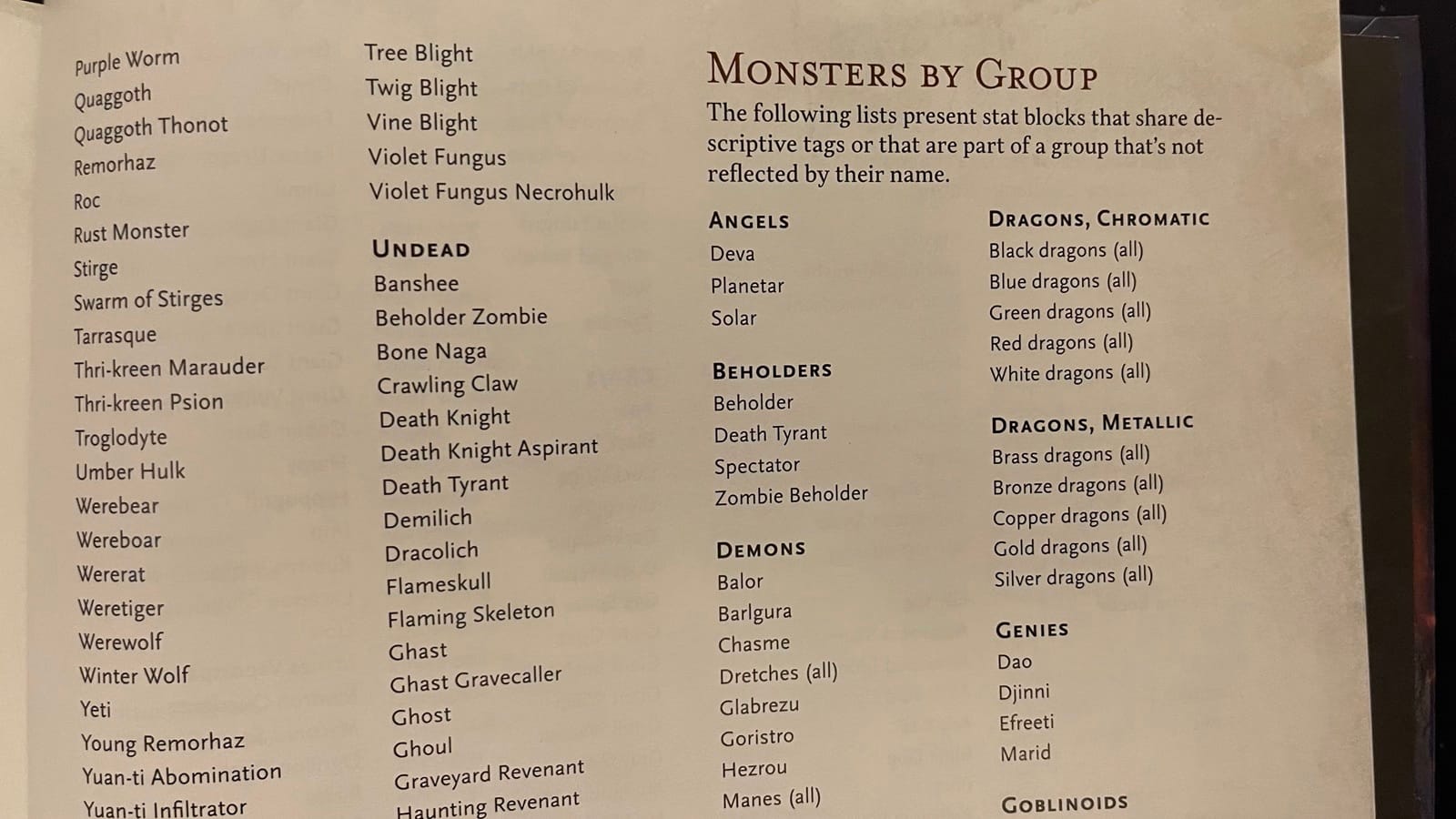
The 2024 update removes these groupings, so efreeti can now be found in the "E" section between earth elemental and elemental cataclysm, and gelatinous cubes are in the "G" section, not the "O" section. I added a lot of tabs to my 2014 Monster manual to help with finding monsters quickly, but I'm not sure that will be as necessary with this version. The groups from 2014 aren't lost though; there’s now a list of the monster groups in an appendix that includes demons, devils, giants, genies, and more. Re-ordering the monsters to alphabetical with no groups certainly helps a novice DM find creatures for the first time. It did come with a cost though, because the groupings had introductory paragraphs in the 2014 book that provided useful information about the groups – that information is now gone.
The new format's primary impact is the stat block, which is now easier to quickly reference during play.
Losing the group descriptions is not the only place where information disappeared. Most, if not all, of the monster descriptions seem to have been tweaked to focus on a physical description and what it might do in an encounter. Previously, there was more information throughout the Monster Manual about how the monsters fit into the D&D multiverse. Even more of this lore vanished with the removal of the groupings. There were six paragraphs that opened the ooze entry in the 2014 book including a bit that tied oozes to the demon Juiblex. The 2014 genie entry had some useful and interesting information that helped with developing a genie’s place in a campaign world. Losing those entries along with a lot of the lore from individual monster entries means that there is no place to find that lore in the 2024 books. The multi-page entries at the beginning of the 2014 giant, dragon, demon, and devil groupings were chock full of useful information that can still be found, but not in the Monster manual. For giants, the entry describing the basics of the ordning (the way giant society in the D&D multiverse works) is gone. Plus, the giant section had a handy bit of artwork with the giants shown in silhouette to scale with their average heights by species listed. In 2024, the sizes of the giants aren't even listed in the individual entries – so a novice DM will have to infer from the individual artwork the relative sizes of the giants.
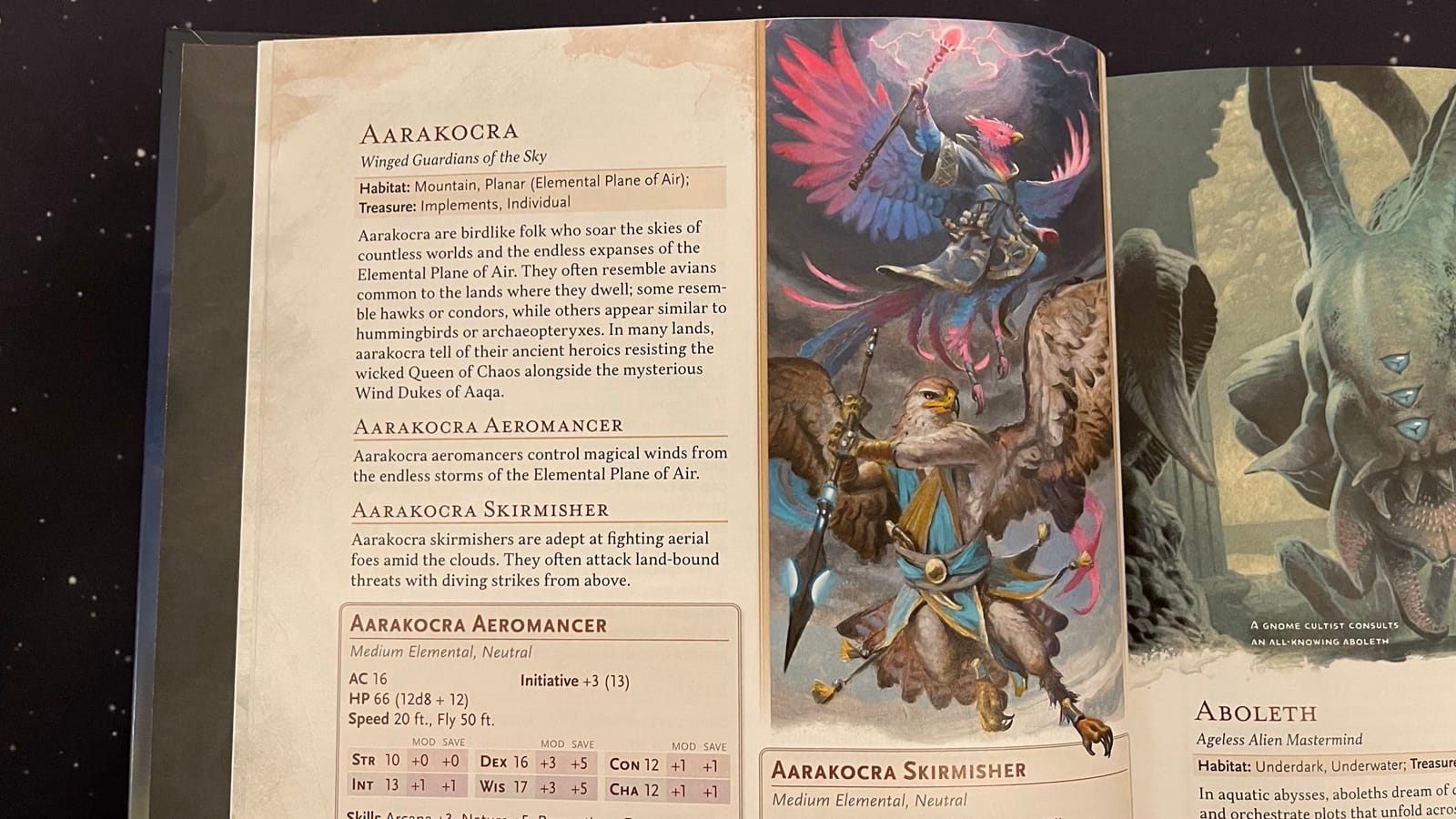
The 2014 devil and demon entries were rather long and included information about demon lords, the infernal hierarchy, demon summoning and more. Some of this lore has moved to the 2024 Dungeon Master's Guide, while some of it has just disappeared. Certainly, a lot of the missing lore is available in other publications. You can find out all about the ordning in Bigby Presents Glory of the Giants and to a lesser extent in Volo's Guide to Monsters. There is plenty of information on devils and demons in Mordenkainen's Tome of Foes, but those other books are not likely to be on the shelves of novice DMs. If you want that lore as a newcomer to the game, you'll need to look in the Dungeon Master's Guide.
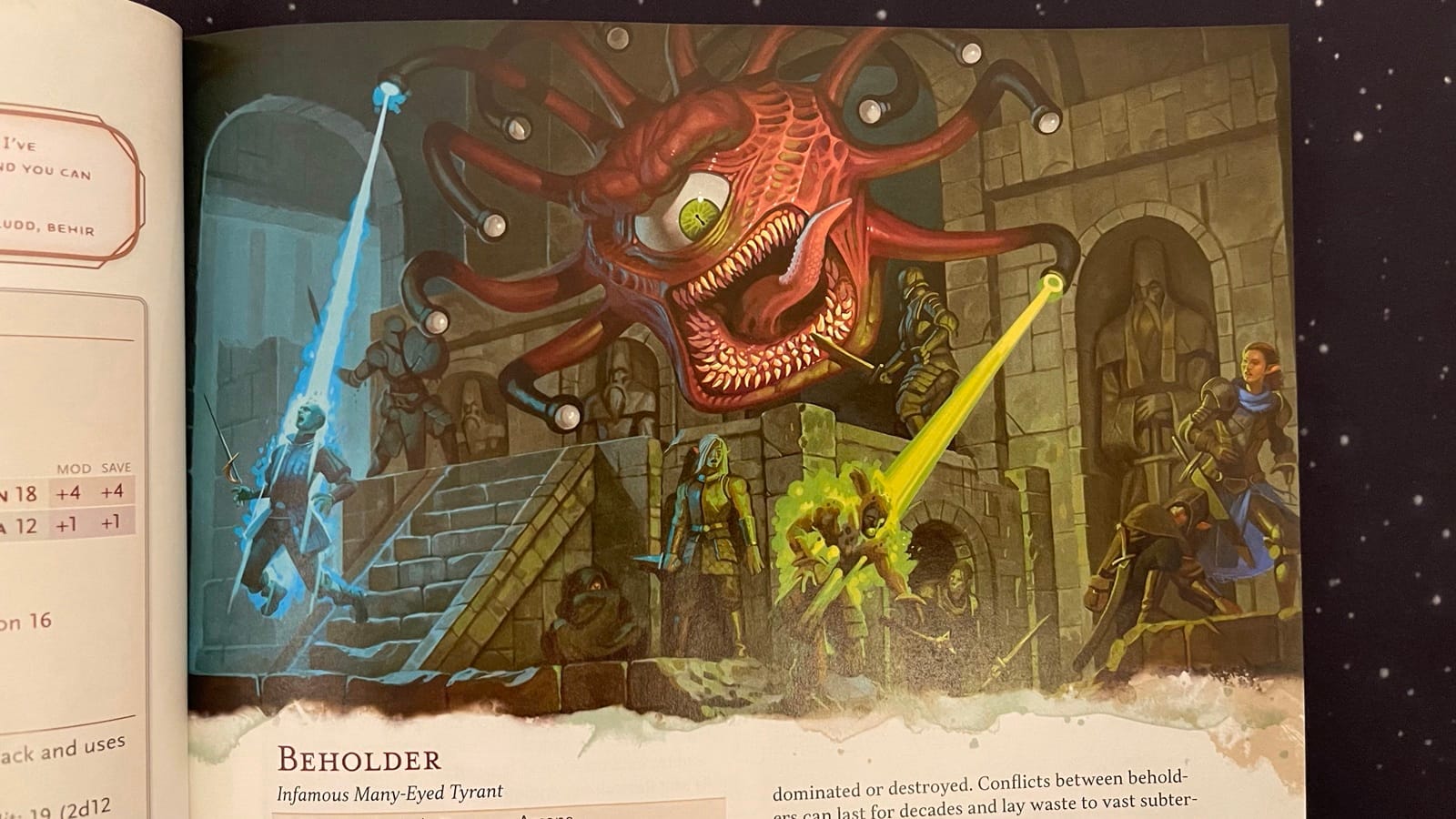
Getting back to the opening section of the book, in an introduction titled, "How to Use a Monster", we get an explanation of the monster entries and a breakdown of the revised stat blocks. This is similar to the 2014; the main difference is that rules explanations, like the definition of tremorsense, that were in the 2014 Manual have been moved to the consolidated rules glossary in the Players Handbook in 2024. Likewise, the chart on sizes compared to the grid has been moved to the Dungeon Master's Guide. This section explains how to read a monster entry, when it comes to how to actually use a monster there is only a brief sidebar that explains how often a monster should use its Special Abilities, Multiattack, and Actions.
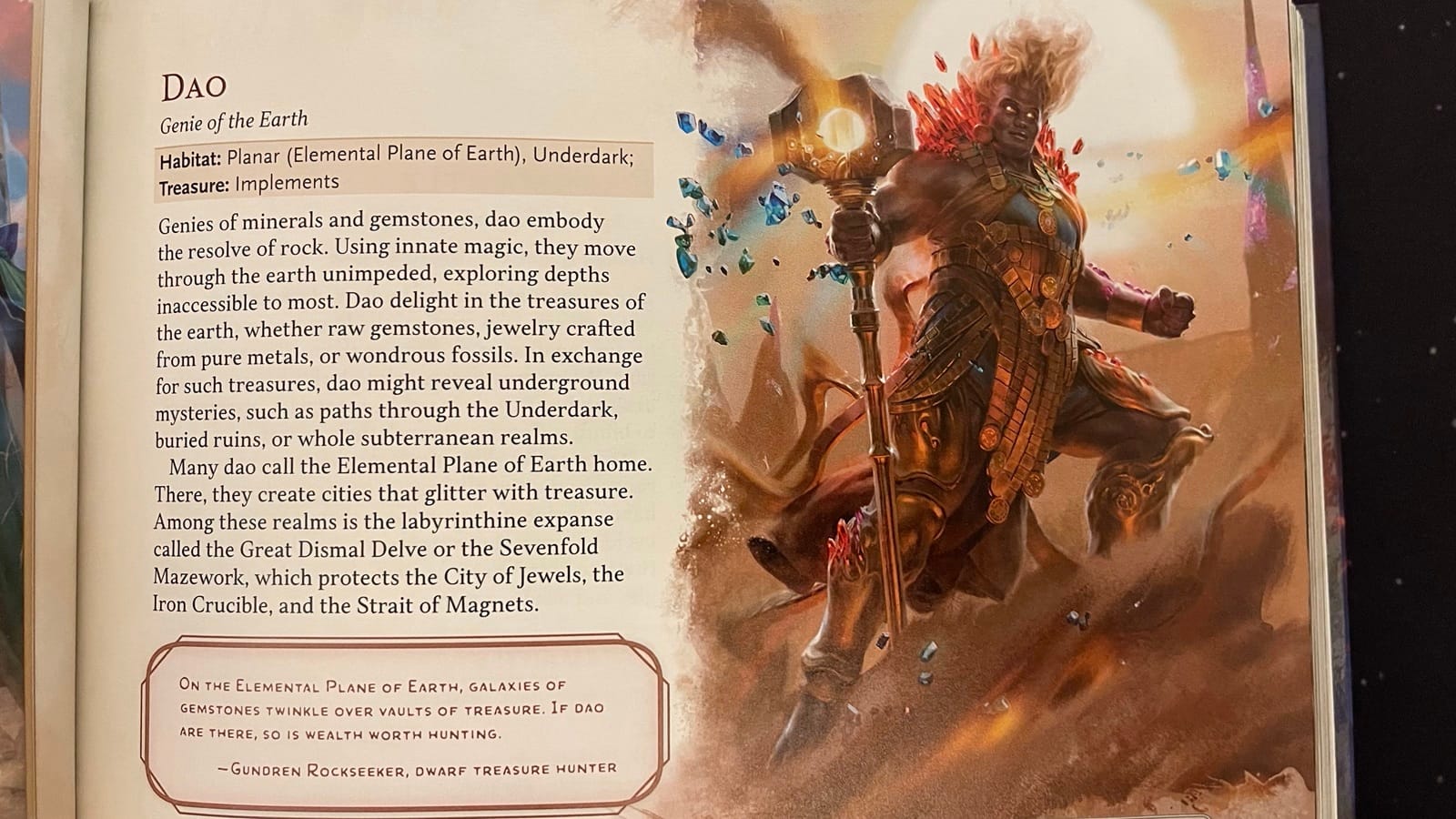
The monster entries have been redesigned to a different presentation, a change that we've already partially glimpsed in the 2024 Player's Handbook. Each entry now has a short, one-line summary of the monster intended to give the reader a feel for what it is right away. Many of the summaries are pretty good. For example, ghosts are described as "Lost Soul and Unquiet Spirits", but some entries are a little more opaque. Ghasts, for instance, are "Tyrants among Corpses" – I'm not sure that’s particularly helpful until after you read the rest of the entry.
 GamingTrendSteven Starkey
GamingTrendSteven Starkey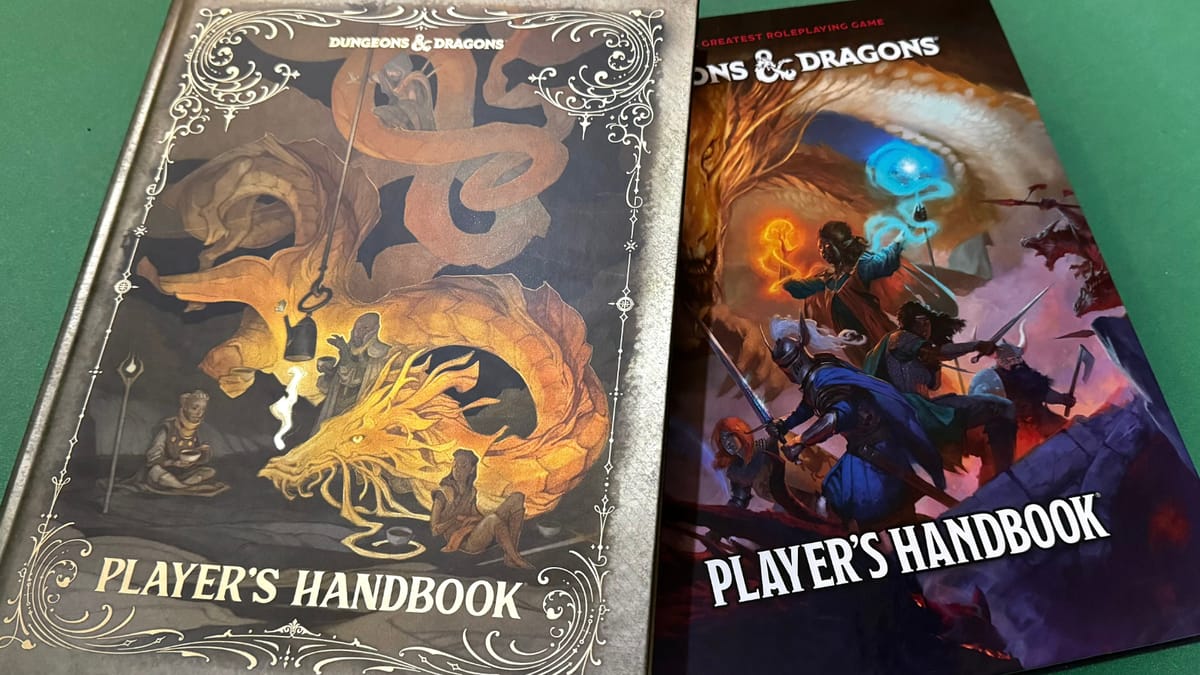
Our Player's Handbook 2024 review
After that intro line, there is a paragraph or two that describes the monster's physical appearance, motivations, and habitats, etc. For some creatures, like kua-toa, there is a deeper dive into details like their gods, but the majority of entries are limited to a paragraph or two of basic information. The new format's primary impact is the stat block, which is now easier to quickly reference during play. While every entry has at least one stat block, there are multiple stat blocks for creatures that have a variety of challenge ratings based on age, profession, or some other variation within that specific creature type. For age, probably the best example is dragons (wrymling, young, adult, and ancient), but the bulette now has a child – the bulette pup. Some creature variants that were sidebar suggestions in 2014 now have their own stat block, such as the kuo-toa monitor. Along those lines, other sidebar suggestions have been incorporated directly into the creatures now and are no longer suggestions. For instance, the option for genies to be able to grant wishes was a sidebar suggestion in the 2014 Manual, but each genie has it in their stat block in the 2024 update.
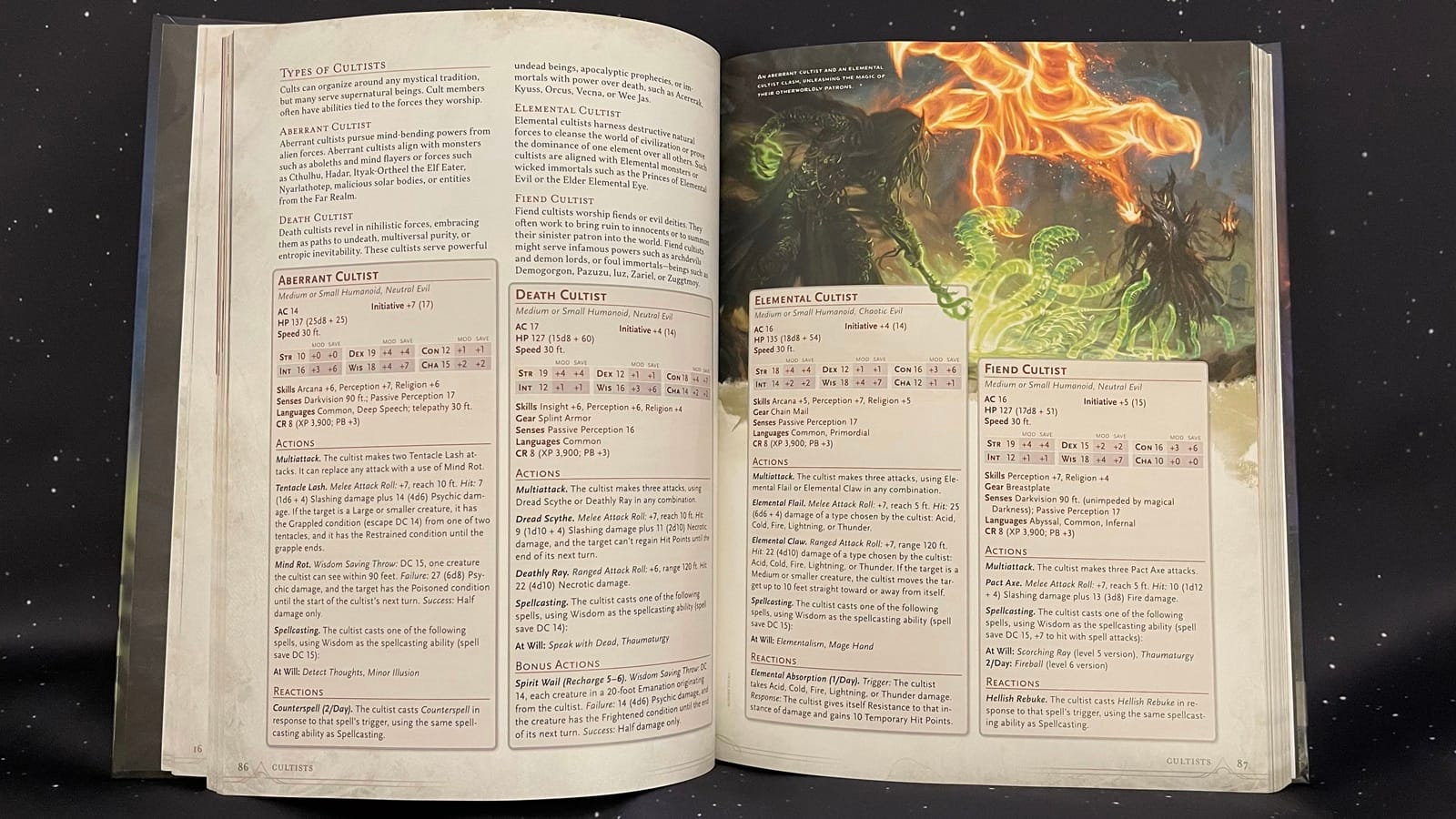
The stat block's new visual presentation makes quickly referencing it easier. Right at the top of the block they've added an entry with the creature's initiative listed both as a bonus to add to the initiative roll and a static number that DMs can use rather than rolling. Structural changes include the saving throws being combined with the ability entries and the CR (challenge rating) entry now including the Proficiency Bonus. The rest of the block is broken into entries in the following order: traits; actions; bonus actions; reactions; and legendary actions. Legendary lair actions that occurred on initiative count 20 previously no longer exist, instead legendary actions can have a Lair number in parenthesis that indicates that the monster can use that action more often if they are in their lair. That's easier than looking up the lair actions in the lair section, which is still in the entries of creatures that have special lairs. Lairs still produce effects in the vicinity which go away upon the death of the monster, but lair actions are no longer listed.
The humanoid entries are now forty-five occupations ranging from "archmages" to "warrior veterans". Each humanoid entry in the book assumes that any species can be dropped into that role.
Overall, the monsters have been streamlined and simplified, in presentation and gameplay. CRs have been tweaked for a lot of monsters while damage output has also been increased. It’s hard to say without getting them into play how these changes will affect gameplay, but my sense is that combat will run deadlier in 2024. Many monsters have their number of actions reduced, especially those that have legendary and lair actions. The number of spells available to high-level spell casters has been reduced. Liches for example have lost nearly ten spells. Spells also no longer use slots, they are listed in their respective action sections and are either at will or limited to per day usage. Spell levels are listed for spells that vary in effect based on level. Overall, the streamlining effects probably make these monsters much less overwhelming to run and most DMs probably won't miss a half dozen spells their liches never used in an encounter anyway.
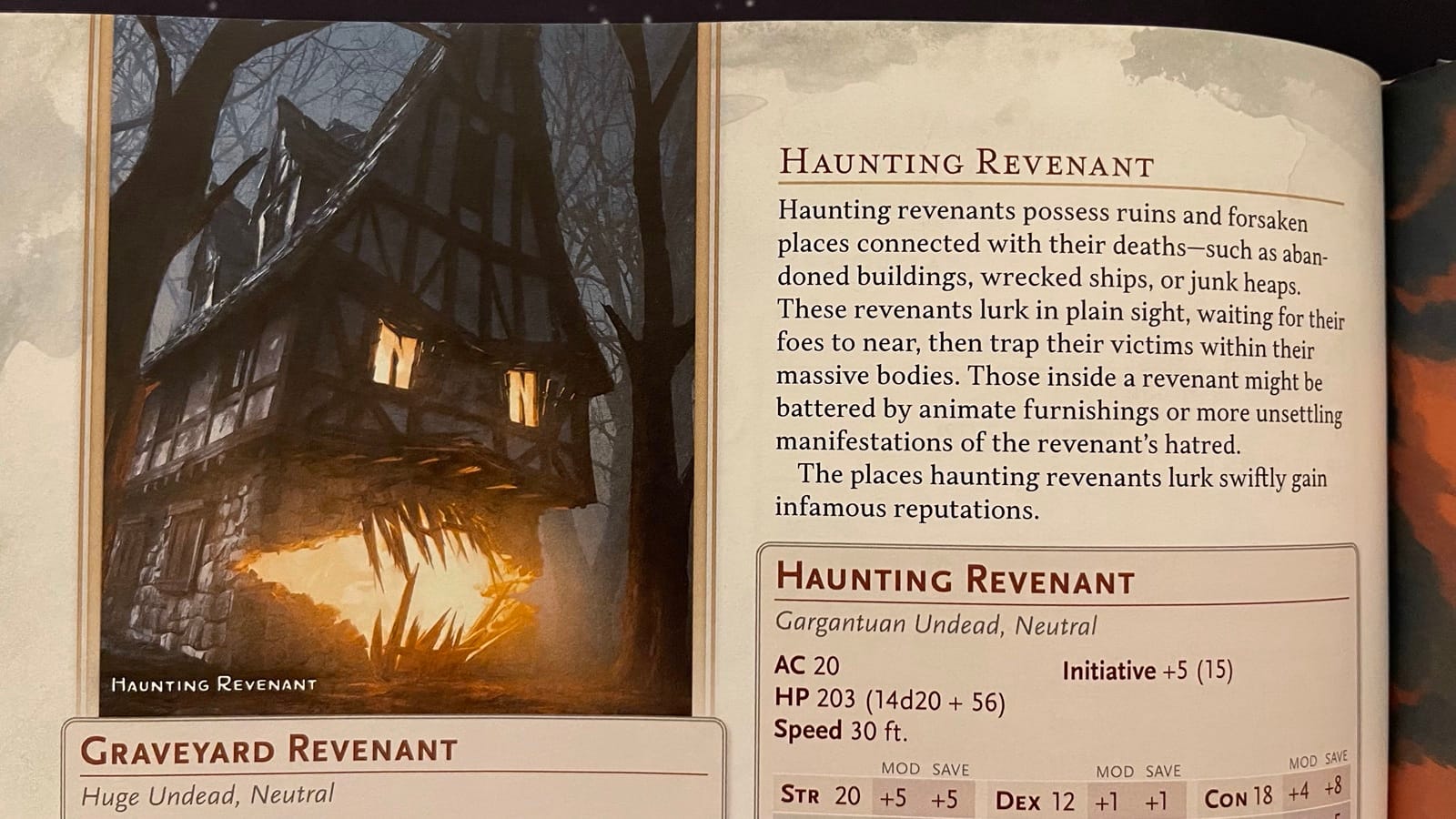
At the end of the book, there are two appendices: Appendix A Animals, and Appendix B, Monster Lists. Appendix A is a new version of the 2014 Miscellaneous Creatures appendix. The difference here is almost all of the creatures are the beast type and none of them have a description. They are so closely related to real-world creatures (including dinosaurs) that the description unnecessary. Creatures like the axe beak, which appeared in the appendix in 2014 but need descriptions, are able to talk, or for some other reason didn’t fit in the appendix were moved to their own entry in the main list. Appendix B's lists of monsters enables the reader to look up monsters by habitat, creature type, group, and challenge rating. It also has a cross-reference chart for changes to monsters from 2014 - 2024. This cross-reference is necessary, because, while all of the monsters in the 2014 book have equivalent representation in the 2024 book (which is absolutely necessary to maintain the "backwards compatibility" of the 2025 rules) some have had their names changed, others have changed entirely or even been flat out replaced. For instance, the aarakocra gained a stat block, so the entry has the aarakocra skirmisher and the aarakocra aeromancer, and the table at the back tells you that the 2014 aarakocra is now the aarakocra skirmisher. On the other hand, orogs are gone entirely and their 2024 equivalent stat block is the berserker.
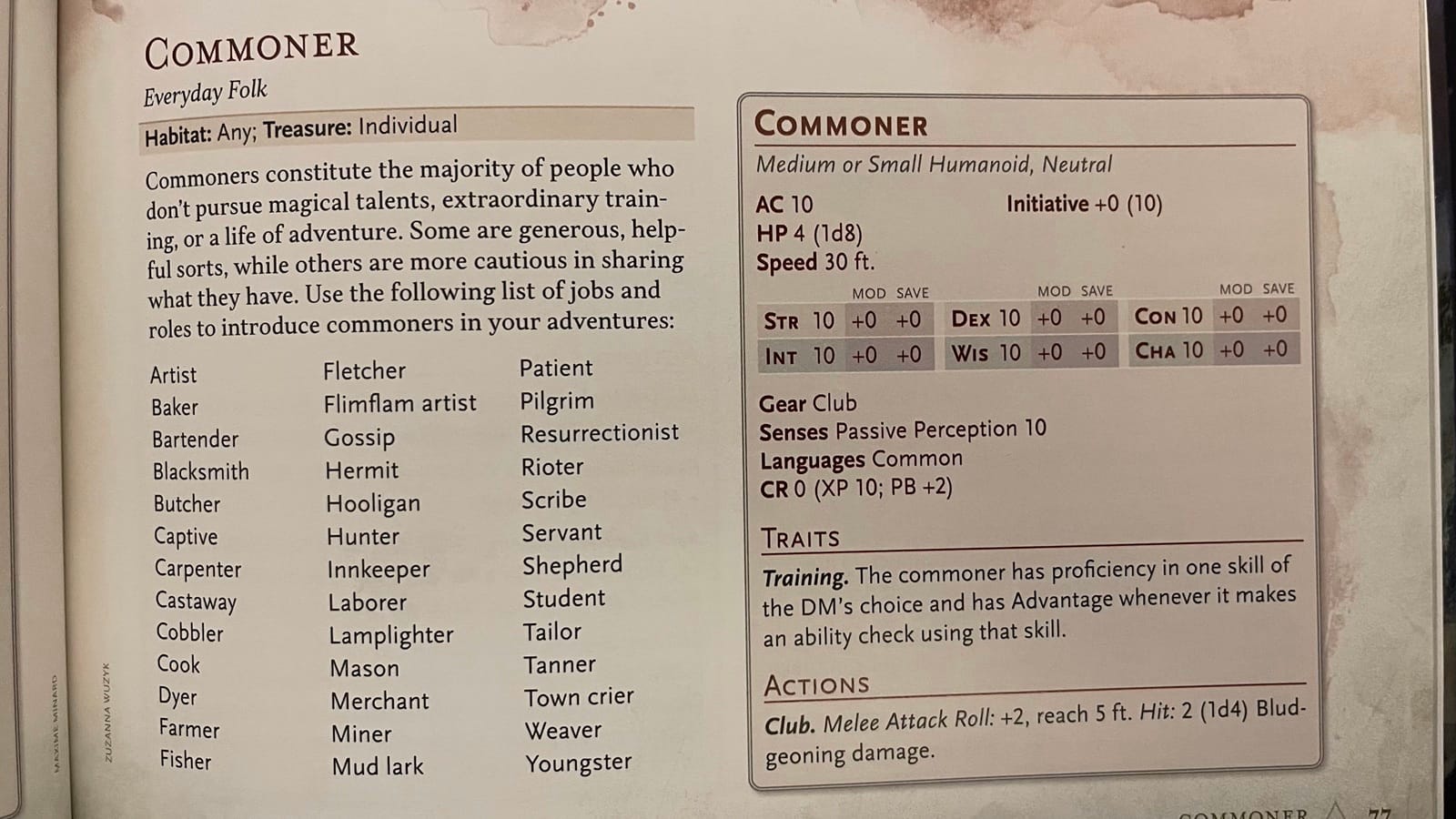
One of the bigger shifts in the new version of the Manual is the changes to humanoids. The humanoid entries are now forty-five occupations ranging from "archmages" to "warrior veterans". Each humanoid entry in the book assumes that any species can be dropped into that role. The guard entry gives stats for a guard, it’s the DM that determines if it's a human, orc, elf, etc. While in the 2014 book, it worked the same way with the NPC appendix, there were other entries in the book that were listed as humanoids - like goblins. Now, goblins are fey as are bugbears and bullywugs. Aarakocra are elementals now. Humanoid species that have lost individual entries are deep gnomes, drow, duergar and more. Overall, the changes don’t really impact the usefulness of the monsters in the book.
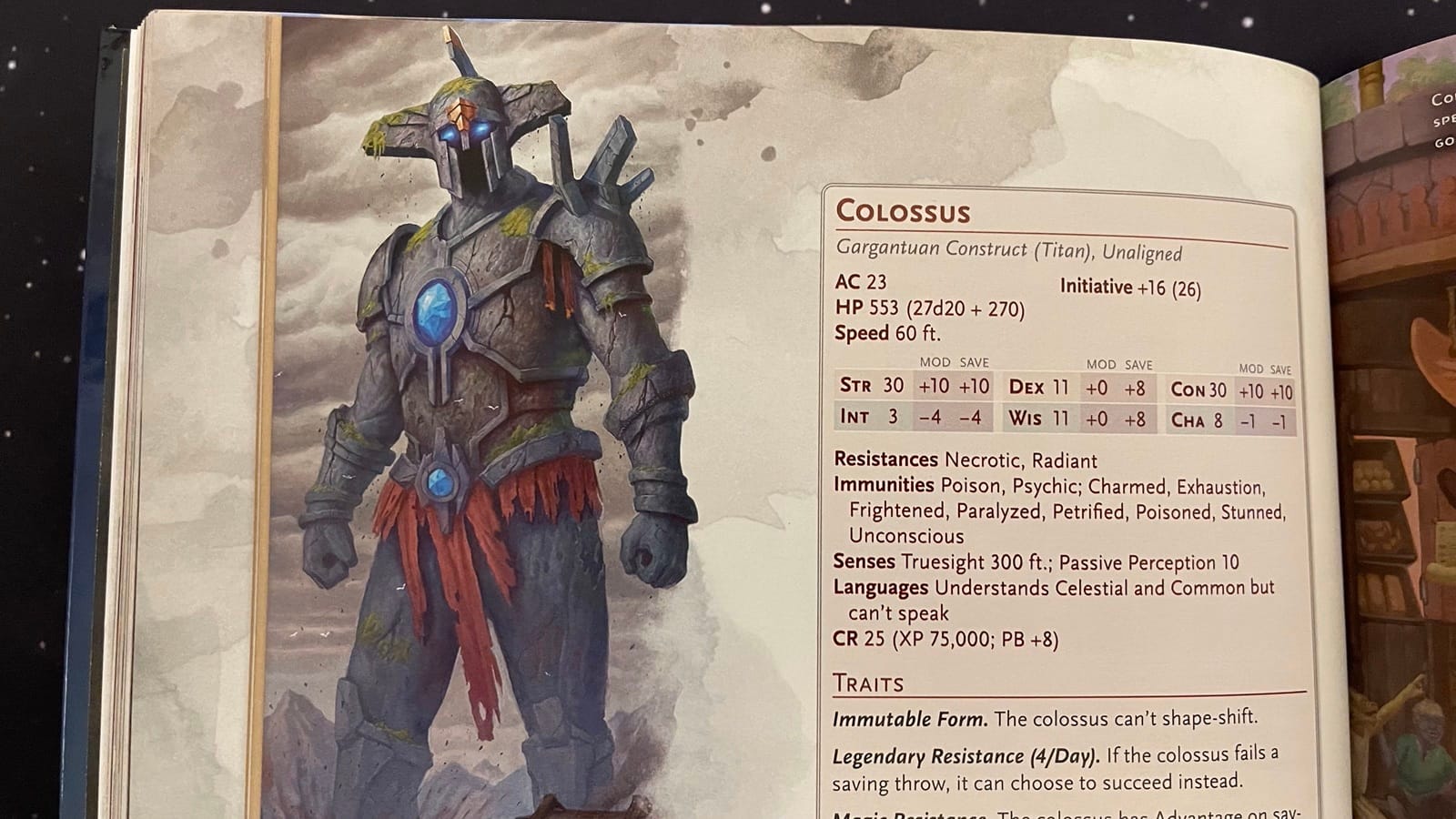
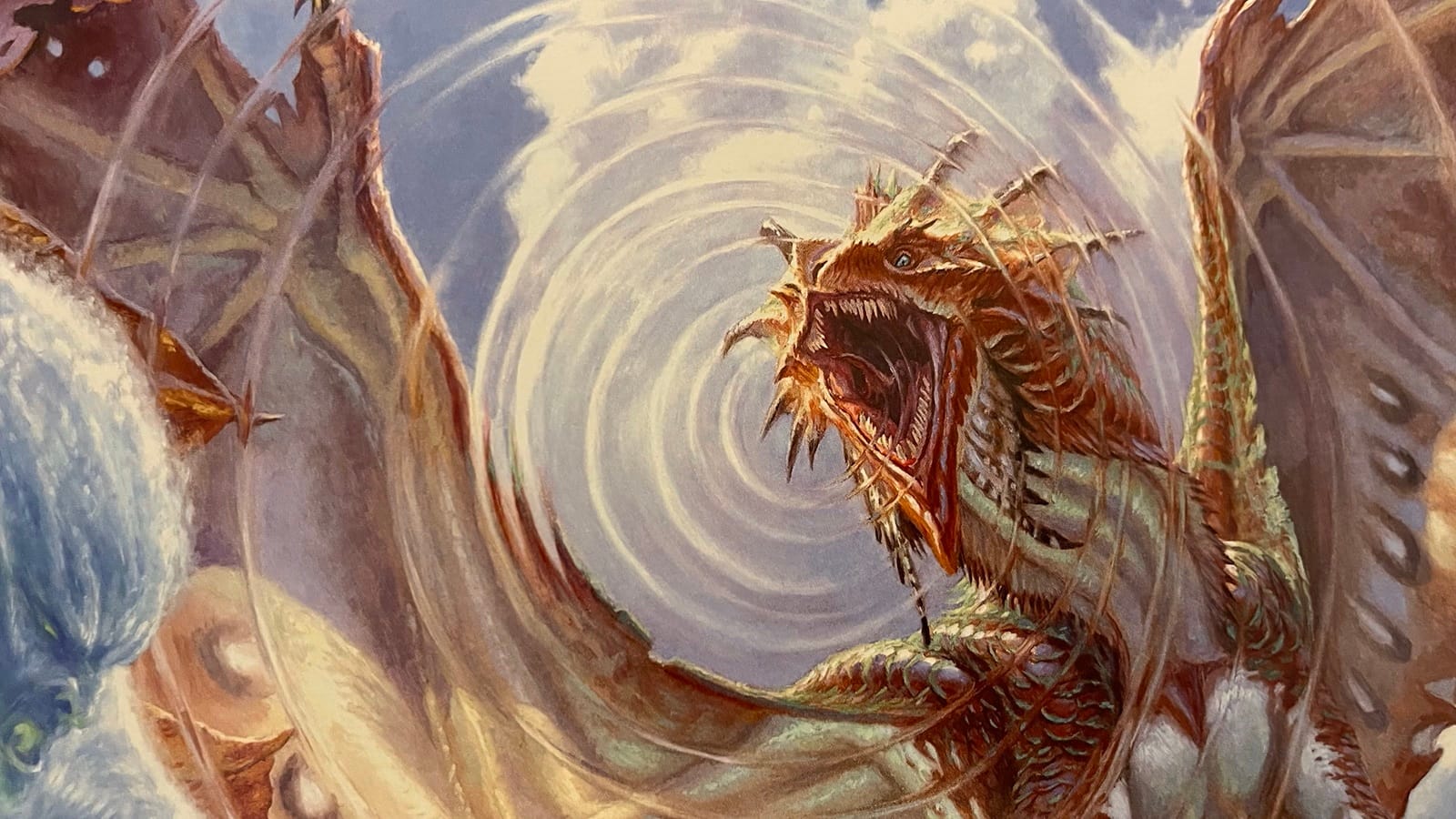
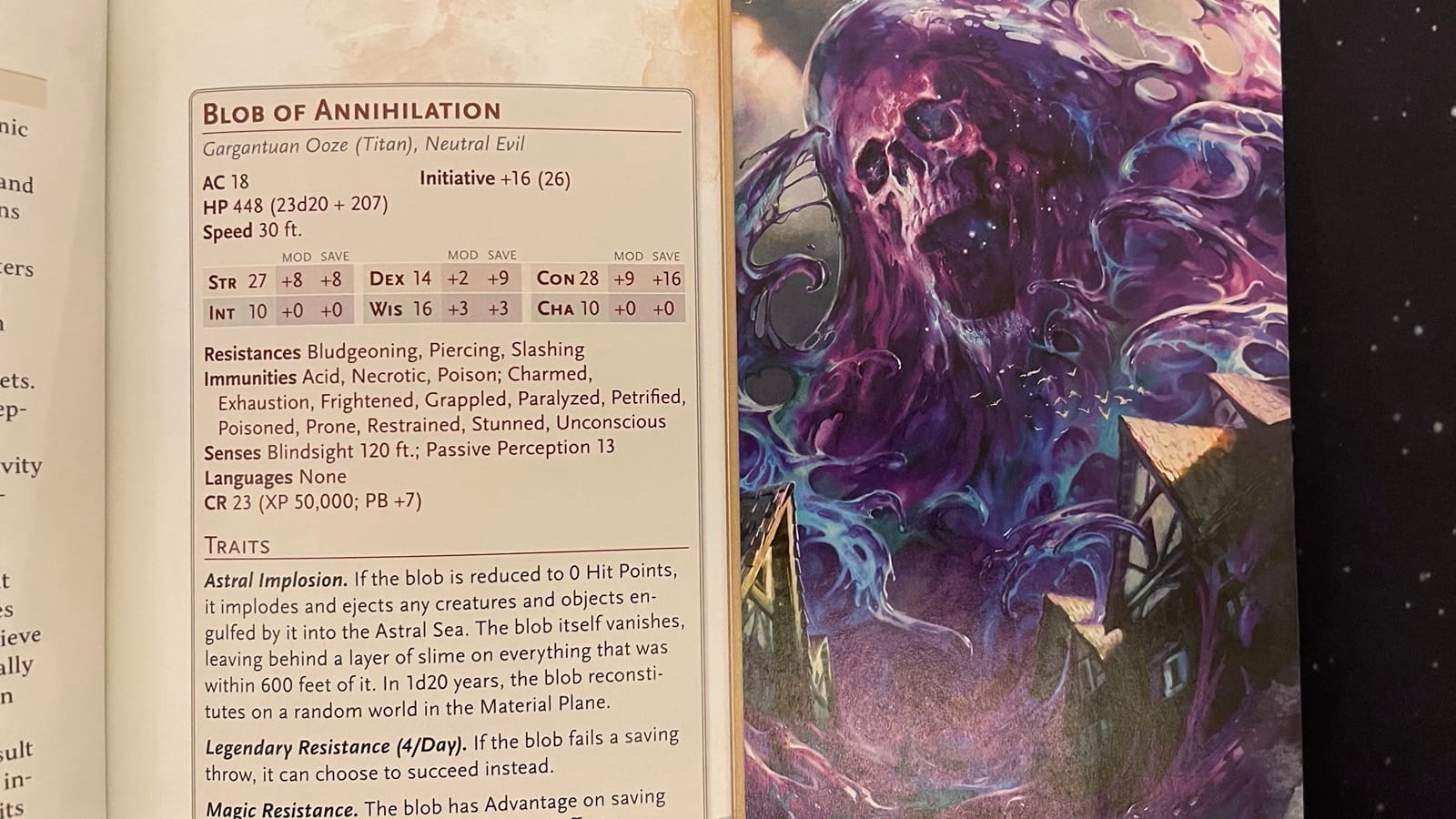
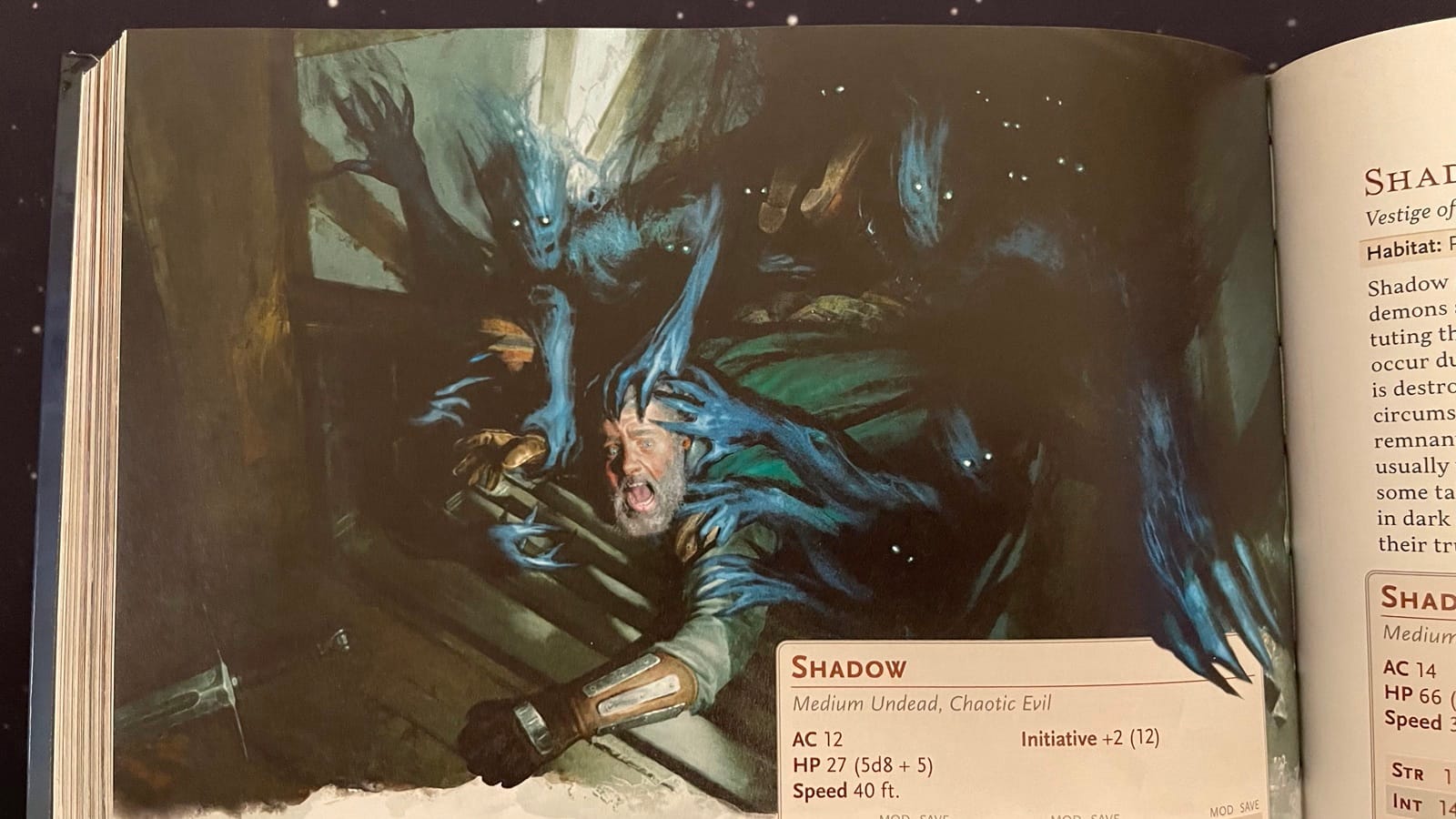
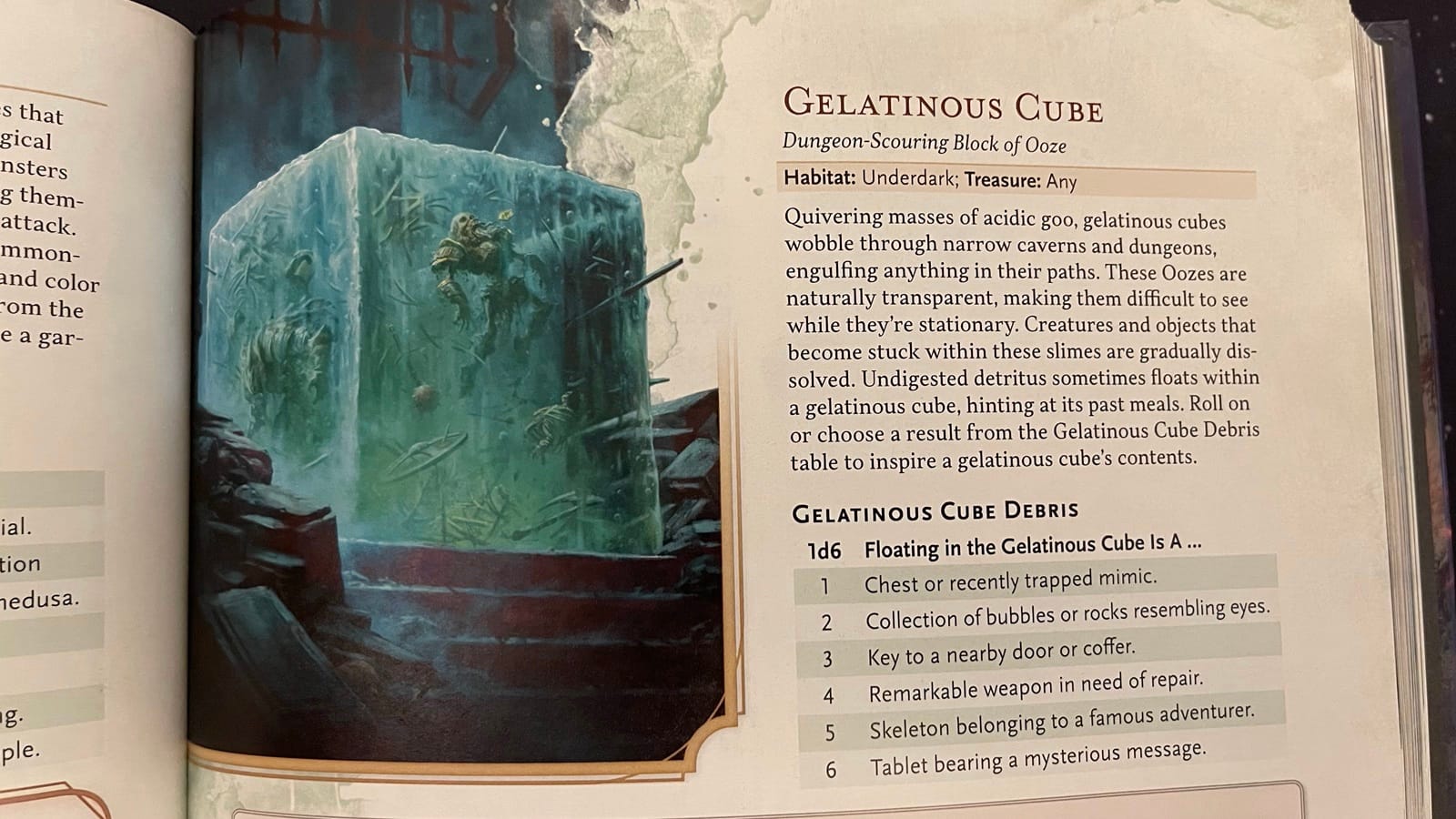
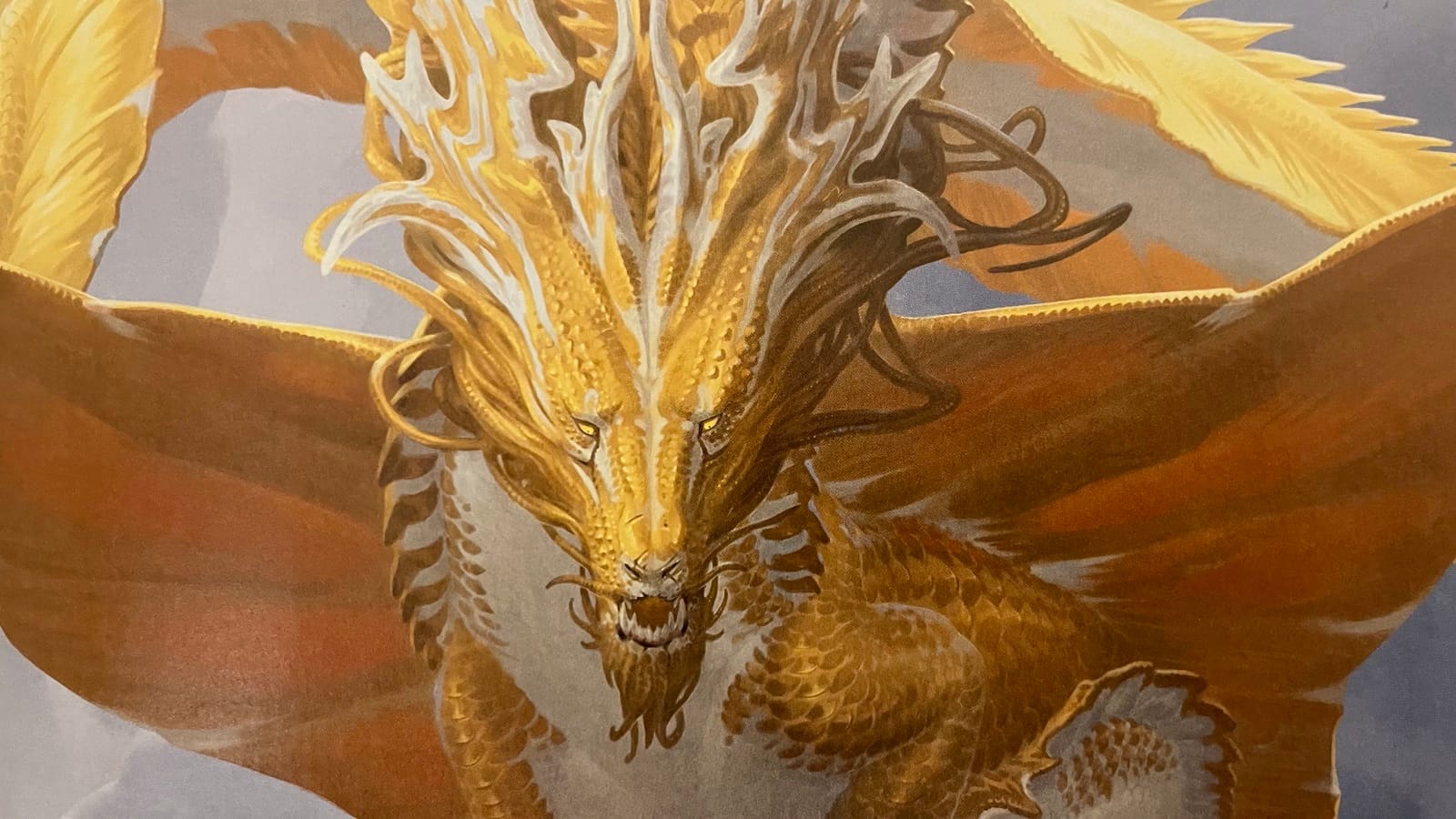
There are over eighty new creatures broadening the base a DM can draw from throughout the life of a campaign. Many of them are variants of existing creatures, like the new merfolk wavebender which adds a CR 6 merfolk to the DM's toolbox. There are also brand new monsters, although many of them are either variations on a theme – like the swarm of crawling claws, or the very cool haunting revenant which takes the revenant concept from just an animated corpse to an animated area. Some of the new monsters have been in the D&D multiverse, if not in the 2014 Monster Manual, like the lacedon ghoul, which returns from a side-note in the 3.5 Monster Manual. It appears that the CR 10 creatures got the most new representatives, with their number doubling from eight to sixteen. The highest CR new addition is the CR 25 colossus, which joins the new blob of annihilation (CR 23), elemental cataclysm (CR 22), and arch hag (CR 21) as the apex monsters of their types – constructs, oozes, elementals, and fey respectively. These monsters will give plenty of DMs great campaign climax monsters to throw into their games. Almost all of the entries are illustrated with brand new high quality artwork, over 300 pieces of art to more than 500 stat blocks, isn't a bad ratio. I continue to be amazed by the quality of the art and design in these books.
Monster Manual 2024
Excellent
The 2024 Monster Manual is an excellent book and worthwhile upgrade from the 2014 edition. The new stat blocks are easier to read and quicker to reference and the order they are presented makes them quicker to find. On top of the improved reader experience from the design, the artwork makes the book pleasing to flip through. I find myself inspired to use the creatures in the book simply by perusing the artwork and reading the descriptions, which is what you should want from a resource book like this. Restructuring how humanoids are handled is not really an issue from a usefulness standpoint, everything in here still works and can easily be inserted into a D&D campaign. My only drawback for the book is the loss of lore – even though a lot of it can now be found in the Dungeon Master's Guide, the loss is noticeable. This edition of the Monster Manual is an improvement over its predecessor and should find a welcome space on any DM's bookshelf.
Pros
- Excellent graphic design improvements.
- Fantastic artwork.
- Added monsters give DMs more options.
Cons
- Loss of lore for DMs to reference.
This review is based on an early copy provided by publisher. Monster Manual 2024 comes out on February 18, 2025.
